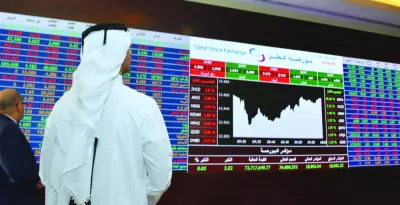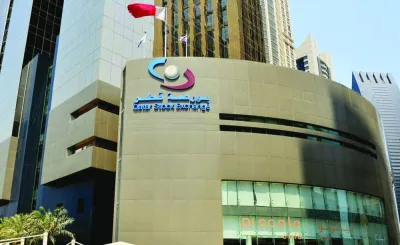Qatar's inflation-adjusted (real) economy is estimated to have grown 1% year-on-year during the second quarter (Q2), mainly on faster expansion in hydrocarbons, according to the official data.The real gross domestic product (GDP) was up 0.5% on a quarterly basis during the review period as the mining sector growth masked the decline in non-hydrocarbons, according to the Planning and Statistics Authority data.The mining and quarrying sector, under which hydrocarbons fall, is estimated to have grown 2.3% year-on-year and the non-mining and quarrying sector by 0.1%.The agriculture, forestry and fishing sectors soared 4% on an annualised basis in Q2-2023, but was down 1.1% quarter-on-quarter.On a quarterly basis, the real GDP (at constant prices) growth during Q2-2023 was mainly due to a 1.6% jump in the mining sector, even as non-mining and quarrying sector reported a marginal 0.1% decrease.Within non-hydrocarbons, the accommodation and food service segment is estimated to have expanded 18% year-on-year in Q2-2023, followed by transport and storage by 5.6% and real estate by 4.2%.Nevertheless, information and communication saw a 9.1% decline year-on-year, wholesale and retail trade 6%, finance and insurance 3%, construction 2%, manufacturing 1.5% and utilities 1% during the review period.On a quarterly basis, the information and communication sector plummeted 19.6%, wholesale and retail trade (9.8%), accommodation and food service (5.5%), and transport and storage (4.2%) during Q2-2023.However, the utilities sector reported a 16.8% surge, finance and insurance (4.4%), real estate (2.8%), manufacturing (1.7%) and construction (0.2%) during the review period.On a nominal basis (at current prices), Qatar's GDP is estimated to have declined 13.7% and 5% year-on-year and quarter-on-quarter respectively at the end of Q2-2023.The mining and non-mining sectors plummeted 25.5% and 3.9% on yearly basis respectively during Q2-2023.On a quarterly basis, both mining and non-mining sectors witnessed 9.2% and 2.1% contraction, leading to a decline in nominal economy during Q2-2023.Within non-hydrocarbons (in nominal terms), there was a 32.3% year-on-year plunge in manufacturing, 4.6% in wholesale and retail trade, and 0.5% in transport and storage during Q2-2023.Nevertheless, the finance and insurance sector soared 21.4% on an annualised basis, real estate (12.2%), accommodation and food service (12.1%), utilities (9.9%), construction (1.5%) and information and communication (0.7%), during the review period.On a quarterly basis in nominal terms, the accommodation and food services segment plunged 17.5%, manufacturing 11.1%, wholesale and retail trade (9.6%), information and communication (8.7%), finance and insurance (7.5%), and transport and storage (5%) during Q2-2023.However, the utilities segment saw a 16% jump in nominal terms on a quarterly basis, 11.1% in construction, and 2.7% in real estate during Q2-2023.The import duties, on real terms, are estimated to have risen 2.8% year-on-year but shrank 5.7% quarter-on-quarter at the end of Q2-2023.On nominal terms, the import duties reported a 1.3% contraction year-on-year, whereas it shot up 5.9% on a quarterly basis during the review period.

Santhosh V. Perumal
Santhosh V. Perumal, a postgraduate in Econometrics with an advance qualification in Capital Markets and Financial Services, is Gulf Times' journalist. His coverage areas are debt and equity, hydrocarbons, international trade, environment, banks, insurance and real estate. Previously, he was in New Delhi, India as Senior Finance Correspondent of PTI.
Most Read Stories























